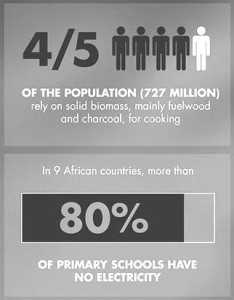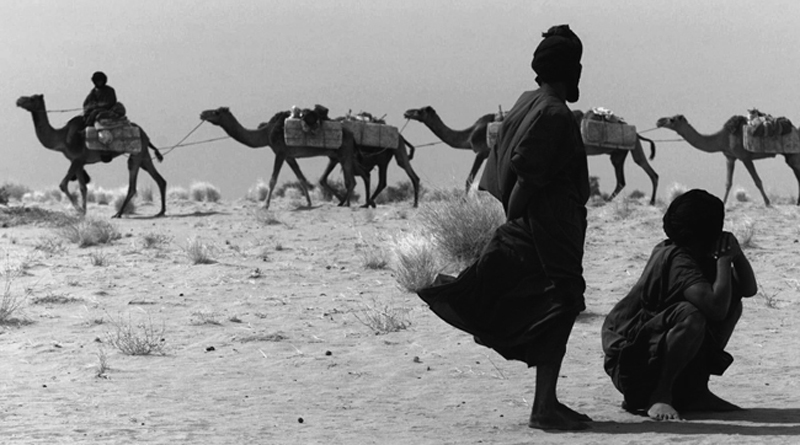
by Angy Essam
Africa has experienced high and continuous economic growth in the past decade, prompting analysts to argue that the continent has reached a turning point in its development history
 Africa is poised to play a more significant role in the global economy in the 21st century. The average annual growth rate of real output increased from 1.8 per cent in the period 1980–1989 to 2.6 per cent in 1990–2000 and 5.3 per cent in the period 2000–2010. Furthermore, 12 countries had an average growth rate above the developing-country average of 6.1 per cent over the period 2000–2010, and two countries (Angola and Equatorial Guinea) had double-digit growth rates. Unlike in the 1980s and 1990s, Africa’s average growth rate since the turn of the millennium has also been higher than the average growth rate of the world economy (table 1). The continent experienced a significant slowdown in growth due to the global financial and economic crisis of 2008/2009 (Osakwe, 2010). Nevertheless, its average growth rate in the post-crisis period (2008–2012) was about 2 percentage points higher than that of the world economy. Internal and external factors contributed to Africa’s relatively impressive growth performance over the past decade. Better macroeconomic management, high domestic demand and a relatively more stable political environment are some of the internal factors that supported growth in the continent. On the external front, favorable commodity prices, stronger economic cooperation with emerging economies, higher official development assistance since 2000, and an increase in foreign direct investment (FDI) flows contributed the growth process.
Africa is poised to play a more significant role in the global economy in the 21st century. The average annual growth rate of real output increased from 1.8 per cent in the period 1980–1989 to 2.6 per cent in 1990–2000 and 5.3 per cent in the period 2000–2010. Furthermore, 12 countries had an average growth rate above the developing-country average of 6.1 per cent over the period 2000–2010, and two countries (Angola and Equatorial Guinea) had double-digit growth rates. Unlike in the 1980s and 1990s, Africa’s average growth rate since the turn of the millennium has also been higher than the average growth rate of the world economy (table 1). The continent experienced a significant slowdown in growth due to the global financial and economic crisis of 2008/2009 (Osakwe, 2010). Nevertheless, its average growth rate in the post-crisis period (2008–2012) was about 2 percentage points higher than that of the world economy. Internal and external factors contributed to Africa’s relatively impressive growth performance over the past decade. Better macroeconomic management, high domestic demand and a relatively more stable political environment are some of the internal factors that supported growth in the continent. On the external front, favorable commodity prices, stronger economic cooperation with emerging economies, higher official development assistance since 2000, and an increase in foreign direct investment (FDI) flows contributed the growth process.
Despite Africa’s relatively strong economic growth performance over the past decade, many countries in the continent are grappling with several development challenges ranging from food insecurity, high unemployment, poverty and inequality, to commodity dependence, lack of economic transformation, environmental degradation, and low integration of the continent in the global economy. Since the dawn of the new millennium, African Governments and the international community have adopted various initiatives aimed at addressing these development challenges and improving living conditions on the continent. At the continental level, African Heads of State and Government adopted the New Partnership for Africa’s Development (NEPAD), which emphasizes African ownership of the development process and outcome, and calls for interventions in the following priority areas: agriculture and food security, regional integration and infrastructure, climate change and environment, human development, economic governance, and capacity development and women empowerment. At the international level, world leaders adopted the Millennium Development Goals (MDGs) which called for, among others, a halving of the proportion of people living in poverty by 2015. There are also ongoing efforts by the international community to delineate and finalize the broad contours of the post-2015 development agenda, within the framework of sustainable development.
Research studies indicate that if Africa is to make significant progress in reducing poverty it will have to sustain average growth rates of about 7 per cent and above in the medium to long term, and this will require investment rates of 25 per cent of gross domestic product (GDP) and above. Over the past two decades the average investment rate in Africa has hovered around 18 per cent, which is well below the 25 per cent threshold, and so it is not surprising that the continent has not achieved the 7 per cent average growth rate required to make significant progress in reducing poverty. This fact suggests that the slow progress in realizing Africa’s development goals over the past decade is in part a consequence of the fact that the continent has not made the level of investments required to achieve these goals. In infrastructure, for example, it is estimated that countries in sub-Saharan Africa would need to invest $93 billion per year in order to meet their development goals. But actual investment on the subcontinent is $45 billion, implying a funding gap of about $50 billion per year. The estimate does not include North Africa, so adding this region will increase the infrastructure funding gap for the continent significantly. There are also funding gaps in the production sectors and closing these gaps is a major challenge that African Governments will have to address in the short to medium term. This task will become even more daunting when the post-2015 development agenda is adopted because its implementation is likely to require additional investments and hence increase Africa’s investment needs. In this context, one of the issues African countries have to address as they seek to transform their economies is how to boost investment, particularly in infrastructure and in the production sectors of the economy. The nature and pattern of Africa’s recent growth has also contributed to the slow progress in poverty reduction and in realizing the continent’s other development goal. Africa’s recent growth has not led to the development of productive capacities and structural transformation, which are two elements vital for generating productive employment and laying the foundation for sustained poverty reduction. Despite the continent’s high and steady growth over the past decade, many countries are yet to go through the normal process of structural transformation characterized by a shift from low- to high-productivity activities, a decline in the share of agriculture in output and employment, and an increase in the share of manufacturing and modern services in output. The continent has experienced deindustrialization in the past two decades as evidenced by the fact that the share of manufacturing in total value added fell from 13 per cent in 1990 to 12 per cent in 2000 and 10 per cent in 2011. Furthermore, the service sector is increasingly playing a key role in the growth process in Africa. In some countries this has been due to a boom in telecommunications activities. Nevertheless, for most countries in the continent, it is low-productivity activities such as informal and nontradable services that account for the bulk of the recent boom in the services sector and so it is not surprising that it has not had the expected impact on economic transformation. The increasing importance of natural resources in the growth of African economies is also one of the reasons why recent growth has not had the desired impact on economic transformation. Because of the enclave nature of the resource sector, it cannot be relied upon to create enough jobs to absorb the 15 million youths who enter the labour market each year. In this context, there is the need to diversify the sources of growth to create employment, reduce vulnerabilities and also lay a more robust foundation for sustained growth. African Governments have recognised the challenges posed by the current pattern of growth and have renewed their political commitment to economic transformation. At the continental level, economic transformation is one of the key priority issues in the draft strategic plan of the African Union entitled Agenda 2063. It is also one of the four priority issues identified by African countries in the African common position on the post-2015 development agenda. The other issues are innovation and technology transfer, human development, and financing and partnerships. At the national level, many countries have also made economic transformation a key focus of their development agenda in the medium to long term. For example, the Ethiopian Government has a Growth and Transformation Plan aimed at boosting agricultural and industrial growth. Cote d’Ivoire has an Economic Emergence Strategy aimed at making it an industrial economy by 2020. Similarly, Uganda intends to accelerate its socioeconomic transformation through Vision 2040 and Lesotho’s Vision 2020 gives pride of place to industrial development. Countries such as Egypt, Kenya, Rwanda, Sierra Leone, South Africa, and Zimbabwe, among others, have also developed plans and strategies to transform the structure of their economies towards manufacturing and agro related industries in the medium to long term. A key challenge facing these countries is how to translate their vision of economic transformation into reality. Clearly, this requires an understanding of the drivers of structural transformation in the development process.
While investment is important to the development process, it should be noted that it is a necessary and not a sufficient condition for economic transformation and sustained growth. In this regard, if African Governments want investment to play an effective role in supporting economic transformation and development, the focus should not be solely on boosting the quantity of investment to levels deemed necessary to meet national development goals. They also have to address two related issues. The first is how to ensure that investment is allocated to strategic or priority sectors, particularly infrastructure, agribusiness and manufacturing. Increasing investment and not allocating it to sectors crucial to achieving Africa’s economic transformation agenda will be counterproductive. The second issue African Governments have to address is how to improve the quality or productivity of investment. This is important, particularly in the area of public investments, to avoid resource waste and achieve maximum impact. Low efficiency of public investments weakens the link between public and private capital and also reduces the returns to private investments, making it more challenging to attract such flows. Therefore, improving the productivity of investment should be part of efforts to boost investment and use it in support of economic transformation in Africa. There is also the need for investment in physical capital to be accompanied with complementary investments in human capital and technical knowledge to strengthen its developmental impact. Policy coherence at the national and international levels and the creation of an environment conducive to private sector development will also enhance the likelihood that investment will have a significant impact on growth and development.














